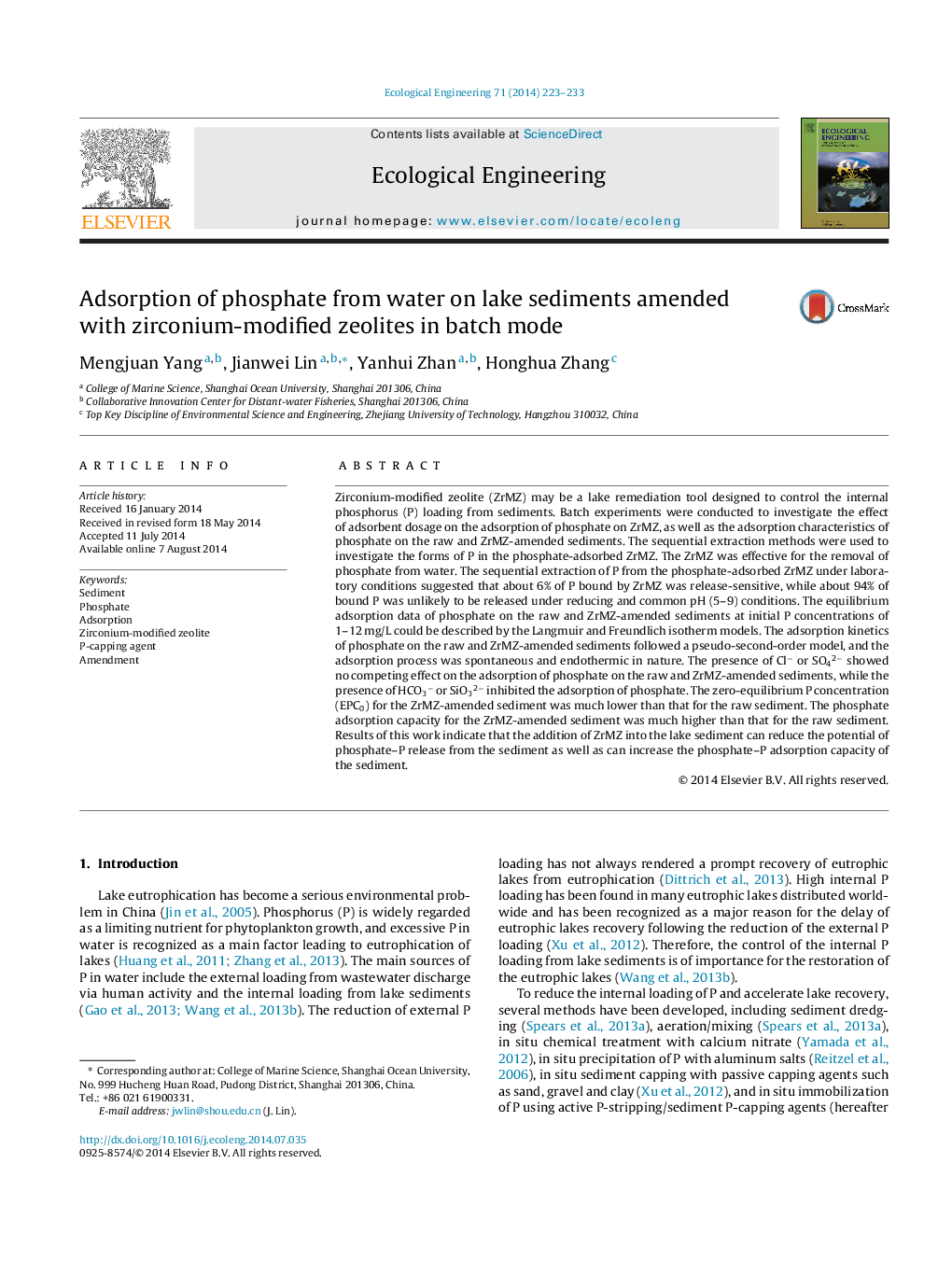| Article ID | Journal | Published Year | Pages | File Type |
|---|---|---|---|---|
| 4389158 | Ecological Engineering | 2014 | 11 Pages |
•A new adsorbent material, i.e., zirconium-modified zeolite (ZrMZ) was synthesized.•The ZrMZ was applied to control phosphate–P (PO43−–P) release from sediments.•ZrMZ addition into sediments reduced the potential of PO43−–P release from sediments.•ZrMZ addition into sediments increased the PO43−–P adsorption capacity of sediments.•Most of PO43−–P bound by ZrMZ was unlikely to be released under reducing conditions.
Zirconium-modified zeolite (ZrMZ) may be a lake remediation tool designed to control the internal phosphorus (P) loading from sediments. Batch experiments were conducted to investigate the effect of adsorbent dosage on the adsorption of phosphate on ZrMZ, as well as the adsorption characteristics of phosphate on the raw and ZrMZ-amended sediments. The sequential extraction methods were used to investigate the forms of P in the phosphate-adsorbed ZrMZ. The ZrMZ was effective for the removal of phosphate from water. The sequential extraction of P from the phosphate-adsorbed ZrMZ under laboratory conditions suggested that about 6% of P bound by ZrMZ was release-sensitive, while about 94% of bound P was unlikely to be released under reducing and common pH (5–9) conditions. The equilibrium adsorption data of phosphate on the raw and ZrMZ-amended sediments at initial P concentrations of 1–12 mg/L could be described by the Langmuir and Freundlich isotherm models. The adsorption kinetics of phosphate on the raw and ZrMZ-amended sediments followed a pseudo-second-order model, and the adsorption process was spontaneous and endothermic in nature. The presence of Cl− or SO42− showed no competing effect on the adsorption of phosphate on the raw and ZrMZ-amended sediments, while the presence of HCO3− or SiO32− inhibited the adsorption of phosphate. The zero-equilibrium P concentration (EPC0) for the ZrMZ-amended sediment was much lower than that for the raw sediment. The phosphate adsorption capacity for the ZrMZ-amended sediment was much higher than that for the raw sediment. Results of this work indicate that the addition of ZrMZ into the lake sediment can reduce the potential of phosphate–P release from the sediment as well as can increase the phosphate–P adsorption capacity of the sediment.
Graphical abstractThe addition of ZrMZ into sediments reduced the potential of phosphate–P release from sediments as well as increased the phosphate–P adsorption capacity of sediments.Figure optionsDownload full-size imageDownload as PowerPoint slide
